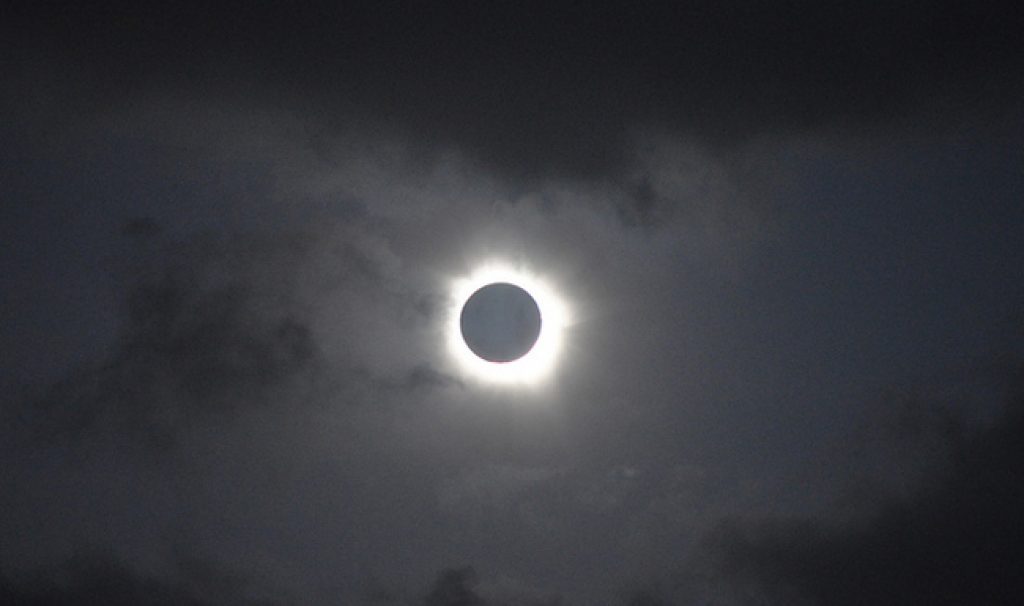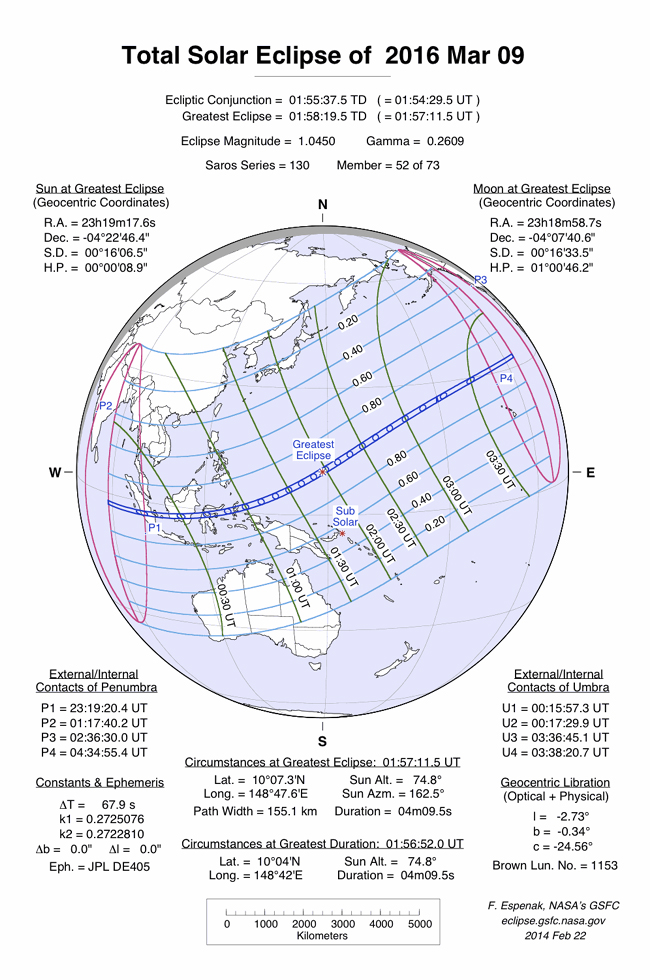
AsianScientist (Mar. 8, 2016) – Astronomer or not, here is some exciting news to brighten up your midweek. There will be a total solar eclipse on Wednesday, March 9 2016, which will be best viewed from parts of the Indonesian archipelago, beginning at around 6:20 am local time.
The eclipse’s path of totality mainly stretches across central Indonesia. The moon will begin eclipsing the sun above Sumatra, Indonesia’s main western island, then sweep across Sulawesi and Borneo and move out over the Maluku Islands towards the ocean, according to Agence France-Presse (AFP).
It will be visible as a partial solar eclipse in certain areas in a few South East Asian countries which are not in the path of totality. These include Singapore, Malaysia, Thailand, Cambodia and Vietnam, among others, said Gary Chee, amateur astronomer and co-founder of Singapore Sidewalk Astronomy, a non-profit interest group.
There are four types of solar eclipses: partial, total, annular and hybrid. Quoting American astrophysicist Fred Espenak, a world authority on eclipses, solar eclipses occur 2.4 times in a year on average, said Chee.

This rare celestial occasion is certainly a cause of celebration for Indonesia, which is expecting about 10,000 foreign visitors and 100,000 Indonesian tourists to take part in skygazing events and other festivities—from a festival featuring live bands to dragon boat races, according to AFP.
Even NASA is headed to the region to experience the eclipse. Besides providing live coverage from Woleai island in Micronesia, NASA is sending a team of scientists to the province of North Maluku, Indonesia. Chosen for its accessibility and high chances of clear skies during the eclipse, here is also where the total eclipse will occur for around three minutes, one of the longest times it can be seen.
The team will be taking advantage of the solar eclipse to capture data on the sun’s superhot atmosphere, a region only observable during total solar eclipses.
“The sun’s atmosphere is where the interesting physics is,” said Nelson Reginald, part of the team from NASA’s Goddard Space Flight Center, according to NASA. “A total solar eclipse gives us the opportunity to see very close to the solar limb.”
On the other hand, casual observers must naturally exercise caution when viewing the eclipse.
“The sun should never be observed directly with unaided eyes; it must only be seen through certified solar filters or indirectly through telescopic or pinhole camera projection,” said Chee.
“Interested solar observers can check the timings of the solar eclipse specific for their location and look at the Sun safely during this period.”
Solar filters can be bought from offline or online retailers that sell astronomical or scientific equipment. Creating a simple pinhole camera using boxes is also an option, according to Chee.
The video below is a simulation of the solar eclipse that was created by Singapore Sidewalk Astronomy.
———
Copyright: Asian Scientist; Photo: NASA’s Goddard Space Flight Center/Flickr/CC.
Disclaimer: This article does not necessarily reflect the views of AsianScientist or its staff.












